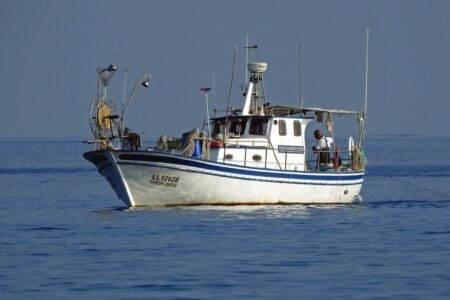This EU Regulation aims to implement the provisions of the Cartagena Protocol on preventing biotechnological risks. The aim of the Protocol is to ensure an adequate level of protection for the transfer, handling and use of genetically modified organisms (GMOs) that may have adverse effects on the environment and human health, and specifically focusing on transboundary movements (the movement of GMOs between two States with the excemption of intentional movements between parties to the Cartagena Protocol within the European Community).
Advertisement
ACT
Regulation (EC) No 1946/2003 of 15 July 2003 of the European Parliament and of the Council on transboundary movement of genetically modified organisms Official Journal L287 of 05.11.2003.
SUMMARY
The Regulation aims to set up a common system for notifying and exchanging information on transboundary movements of GMOs to third countries. The ultimate goal is to ensure that movements of GMOs that may have adverse effects on the sustainable use of biological diversity and on human health take due account of the environment and human health.
Exports of GMOs to third countries
This Regulation distinguishes between GMOs intended for deliberate release into the environment and GMOs intended for use as food or feed, or for processing.
Exporters of GMOs intended for deliberate release into the environment must notify, in writing, the competent national authority of the country of import prior to the transboundary movement. The notification must contain the information specified in Annex I to the Regulation. This notification gives importers the option of only accepting the products for which they have given their prior informed consent.
Where the importer does not reply within 270 days from the date of receiving the notification, the exporter must send a reminder to the competent national authority of the country of import, with a deadline for response of 60 days from receipt. The exporter must send a copy of the notification and of the acknowledgement of receipt to the competent authority of his Member State and to the Commission. Under no circumstances may transboundary movements take place without prior written consent from the importer.
Exporters must keep the notification, the acknowledgement of receipt and the importer’s decision for at least 5 years. They must also notify the transit of the GMOs to any country upon request.
The Commission or the State which took the decision must notify the Biosafety Clearing House (BCH) (set up by the Cartagena Protocol) of any decision regarding the use, including the placement on the market, of GMOs intended for food or feed, or for processing, that may be subject to transboundary movements. The notification must contain the information specified in Annex II to the Regulation. GMOs intended for food or feed, or for processing, may not be moved across boundaries if they have not been authorised within the Community and if the importer has not given his express consent (not withstanding the provisions in Regulation (EC) No 178/2002).
Exporters must ensure that the exported GMOs are clearly identified; in particular, they must state that the product contains or consists of GMOs and produce the codes assigned to those GMOs. Exporters of GMOs intended for food or feed, or for processing, must sign a declaration to the effect that the GMOs will not be deliberately released into the environment. GMOs intended for use in a confined environment must be accompanied by safety rules for their storage, transport and use.
Unintentional transboundary movement
Member States must take the necessary measures to avoid unintentional transboundary movements of GMOs. If a Member State becomes aware of an occurrence resulting in a release of GMOs that may lead to an unintentional transboundary movement that is likely to have adverse effects on the environment or human health, that Member State must:
- inform the public;
- notify the Commission, the other Member States, the BCH and the relevant international organisations;
- consult the affected States to enable them to take the necessary action.
Common provisions
With a view to setting up the information exchange procedure for exports of GMOs to third countries, the Regulation specifies the information that the Member States must notify to the Commission and to the BCH, and the information that the Commission must notify to the BCH.
The Commission and the Member States must designate focal points (entities which are responsible for liaising with the Secretariat to the Protocol in their own name). Member States must also designate their competent national authorities. The Commission and each Member State, on the date the Protocol enters into force in that State, shall notify to the Secretariat to the Protocol the name and the address of their focal points and competent national authorities.
No later than 5 November 2004, Member States must lay down the rules on penalties applicable to infringements of this Regulation.
No less than every three years, Member States must submit a report to the Commission on the application of this Regulation. The Commission must then draw up a report and sent it to the meeting of the parties to the Cartagena Protocol.
Context: the Cartagena Protocol
The Member States and the Community signed the Cartagena Protocol in 2000. In June 2002, the Council published Decision 2002/628/EC concerning the conclusion, on behalf of the European Community, of the Cartagena Protocol on Biosafety. The aim of the Protocol is to ensure that the transfer, handling and use of living modified organisms resulting from modern biotechnology do not have adverse effects on the environment and human health, specifically focusing on transboundary movements. In terms of Community legislation, the term living modified organisms resulting from modern biotechnology can be considered as a synonym for the term GMO. The Cartagena Protocol has been in force since September 2003.
REFERENCES
Regulation (EC) No 1946/2003
Entry into force: 25.11.2003
Official Journal: OJ L 287 of 5.11.2003







